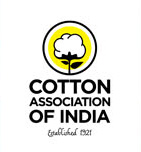MUMBAI, MAR. 12 By Our Special Correspondent
In the opinion Cotton Association of India (CAI), the Cotton Corporation of India (CCI) should not be supporting the private textile industry alone. CCI needs to maximize the return to itself. Therefore, CCI should be selling cotton to any entity – be it a mill, a trader, an exporter or a foreign buyer whoever offers the highest price for its cotton on a given day.
In the case of the minimum support price operation, CCI should be reducing the loss to the exchequer and therefore in this case also, the CCI should be selling its cotton to the highest bidder, stated Mr. Dhiren Sheth, President, CAI, here today.
According to Mr. Sheth, CCI needs to decide its sales policy carefully keeping in view the massive losses it has suffered a few years ago under which it is still reeling due to the defaults committed by several of its clients.The above opinion has been voiced by CAI in response to press reports which have quoted certain sectors having approached the Government to seek its intervention so that CCI releases its stock of cotton to domestic mills and stating that the main reason for the increase in cotton prices recently is due to the hoarding of cotton by certain major traders.
CAI President pointed out that in anticipation of increase in cotton prices, several mills are stocking cotton to cater to their requirement for the next four to six months. Going by the logic given by the certain sector that the traders are indulging in hoarding of cotton, the stocking of cotton by mills will also amount to hoarding.
In fact, most of the traders have taken care of price risks of their purchases by using risk management tools and it is only the un hedged position without any corresponding yarn or fabric sale like that of the mill sector which amounts to speculation, Mr. Sheth stressed.
He informed that cotton prices have risen by around 10 to 12% since the beginning of the season in October 2012. Such an increase over a period of 6 months is very normal. The increase in the Indian cotton prices is in reaction to higher cotton prices in the international markets.
The prices of cotton in the international markets have risen by around 20% during the last 6 months. The gap in international and domestic prices of cotton is narrowing which is a good sign and in the interest of the farmers, Mr. Sheth noted.
The prices of cotton, he said, are also increasing because of increase in yarn prices. The demand for yarn is very good in the international markets during the last few months and the mills have been making good profits.
The office of the Director General of Foreign Trade (DGFT) has the record of the average price of cotton exported this year as well as last year. It also has the similar price data relating to the export of yarn made this year as well as last year. An analysis of these data will reveal that the ratio between the average price of yarn exported this year and the average price of cotton exported this year is much higher than that in the previous year, Mr. Sheth pointed out.
The increase in cotton prices now has resulted in the narrowing down of the margins being enjoyed by the mills so far although the mills continue to have healthy margins, he stressed. (Source: Tecoya Trend)
